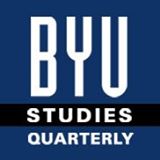BYU Studies

Keywords
Mormon studies, John Milton, Joseph Smith, Book of Mormon
Abstract
In my Introduction to Mormonism class at Graduate Theological Union in 2013, among other topics we discussed the Book of Mormon and its possible provenances. The assignments for the class included my article “Joseph Smith, the Book of Mormon, and the American Renaissance,” in which I compare Joseph Smith with his illustrious contemporaries Ralph Waldo Emerson, Henry David Thoreau, Nathaniel Hawthorne, Herman Melville, and Walt Whitman in terms of their respective literary imagination, talent, authorial maturity, education, cultural milieu, knowledge base, and intellectual sophistication. In that article, I attempted to demonstrate that each of these authors enjoyed a much greater advantage in all of these categories in comparison with Joseph Smith at the time he published the Book of Mormon. Further, I argued that even if Joseph had been blessed with all of the advantages of his contemporary authors, the time, conditions, and circumstances under which the Book of Mormon was produced were insufficient for the composition of such a lengthy, complex, and elaborate narrative as the history of the Nephites and Jaredites. In a followup article, I took the comparison one step further by examining each of these writers’ magnum opus and all of the study, preliminary drafts, critical responses, and written works that preceded them. That is, the major work of each of these writers has a history, one that allows us to trace its evolution from inception to completion.
Recommended Citation
Rees, Robert A.
(2015)
"John Milton, Joseph Smith, and the Book of Mormon,"
BYU Studies: Vol. 54:
Iss.
3, Article 3.
Available at:
https://scholarsarchive.byu.edu/byusq/vol54/iss3/3
